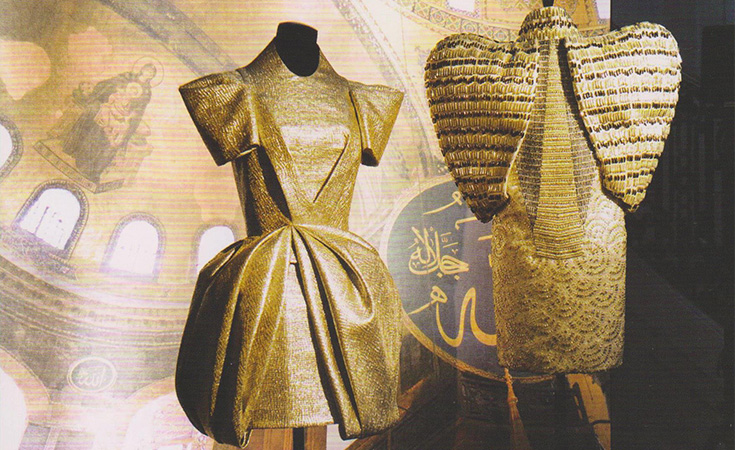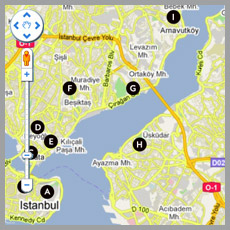by Asst. Prof. Nilay Ulusoy
Existence begins with appearance; social appearance begins with putting on clothes. The feeling Veblen defines as Spiritual need of dress does not only refer to any individual’s intention to show off their financial wealth; dress shopping without needing any comes through people’s desire to view themselves via certain preferences and criteria for grace. In today’s world dressing to meet fashion standards is something more than ornamental and this assigns new meanings and duties to world capitals, also described as mega cities with their demographic features. Istanbul, an undeniable world capital, has been showing a new city profile. This new characterisation, different from any opinion of those who know and think about Istanbul, shows the city in a “trendy and stylish” outfit, trying to become a brand in fashion and shopping.
Throughout the history, Istanbul has been in identity confusion. This is because Istanbul has always been a big port city established on two continents and the capital of three different empires. The city still kepps the “world capital” title acquired by its historical background. After a semi-organic growth without an infrastructure due to heavy domestic migration in 1950s, Istanbul has been presented as a world capital marketing its diverse lifestyles in 1980s. Especially, starting in the 1990s it has been defined as a globally privileged city along with likes of London New York, Tokyo, and even Chicago shaped with a skyscraper skyline.
Istanbul has been aiming to achieve this transnational fashion and shopping centre status, common in all these central cities, since 1980s. A lot of thought was put towards this, given the active role of Istanbul and Turkey in textile sector. Turkey has been the second biggest cotton yarn producer after Hong Kong from Ottoman Empire times to 1980s. In 1980s, textile sector has grown to cover 25% of all export with government supported export based manufacture policies. As both a producer and manufacturer of cotton and cotton products, Turkey has acquired a worldwide well known provider status with its geographical proximity to Europe. As of 2000s, Turkey’s now willing to have a say in design, as well as being the biggest provider of large international companies in textile sector. For this reason, Turkey has both been supporting local designers and working on creating retail clothing brands in 2000s. Istanbul has become the centre of fashion and brand establishment efforts in textile production.
Some of the efforts to promote Istanbul as a recognised fashion city include numerous malls opened in 2000s, textile and fashion fairs, marketing events like Galatamoda to bring local fashion designers and city residents, Istanbul Fashion Week, which is an organisation held since 2009 and supported by various institutions every year, Vogue’s Fashion Night Out, which is held by Vogue Magazine and started the same year, Istanbul’s small local municipalities’ support for fashion and shopping events, efforts be institutions like ITKIB (Istanbul Textile and Outfit Exporters Union) and TGSD (Turkish Clothing Industry Association) and Istanbul Fashion Conference held on 9-10 May 2013. While these events added another view on the “trade centre” identity of the city, which has been ever-present since East Roman Empire times, whether Istanbul is a fashion capital is still debatable. Istanbul still maintains its junction point mission between east and west, and north and south with retail fashion brands in present day. This is why Turkey has focused on Russia, Turkic Republics, Eastern Europe, North Africa and Middle East markets. Turkish retail brands have gained strength and became favourites in aforementioned markets. Being home to management, design and manufacture facilities of these brands, Istanbul is highlighted as the symbol of Turkish textile and fashion scene.
The image of a city must bear a meaning that includes and combines all the dynamics and features of the city on common ground. In this context city image and fashion follow a similar pattern. As fashion relies on communication networks between designer, manufacturer, marketer, media, retailer and consumer, cities rely on communication networks between residents and advertisers of the city, cultural products and their producers, cultural product users, city administrators and media. Fashion industry and design feed from and contribute to this common identity of the city. In today’s world, fashion designers as well as retail shops reflect this urban identity. This is why cities just recognising the power of fashion are redesigned as a whole. Making Istanbul and everything about Istanbul a brand is considered an obligation for the future of the city and all titles attributed to Istanbul are used to support its position in the world. When we consider all fashion events held in Istanbul, we notice these are seen as opportunities to promote Istanbul and Turkey’s value in tourism market. While it’s not clear whether Istanbul has earned “fashion city” title along with “congress city”, “festival city”, “contemporary art city”, ”finance city” and ”estate city”, it aims to become an important city in manufacture along with finances just like any global city. It is known that getting a shopping centre title is not enough to make a brand of a city, but Istanbul has proved itself with young and eager fashion designers in this field. With all these Istanbul can now culturally support the consumer approach that that it feeds on.
Asst. Prof. Nilay Ulusoy*
*We are grateful for this voluntary article written for Istanbul Digital Platform, by Assistant Professor Nilay Ulusoy from Bahçeşehir University Faculty of Communication Cinema TV Department.



















